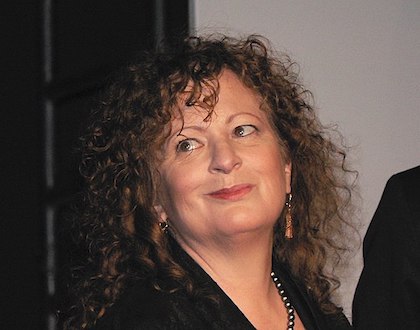Nan Goldin
1953 (Washington)
Living in : Between Paris and New York
Working in : Between Paris and New York
Artist's gallery
Nan Goldin is an American photographer born in Washington, who now lives and works between Paris and New York. She discovered photography at the age of fifteen, during a time marked by the trauma of her older sister’s suicide. Leaving her family home, she began studying photography alongside David Armstrong at an alternative photography school. He introduced her to the world of drag queens and the underground scene, which she would continue to document with deep empathy throughout her career.
In 1977, after graduating from the School of the Museum of Fine Arts in Boston, Nan Goldin moved to New York. There, she began photographing her intimate circle and placed her own life at the center of her work: “I want to show exactly what my world looks like, without glamour, without glorification,” she says. Her photographs of New York’s counterculture, at a time when AIDS was devastating and taking many of her friends, redefined autobiographical photography in the 1980s, greatly influencing a new generation of artists. Her work is deeply rooted in a feminist perspective. She uses photography to challenge social norms, document aspects of women’s everyday lives that are often overlooked, and capture stolen, authentic moments.
Living in : Between Paris and New York
Working in : Between Paris and New York
Artist's gallery
Nan Goldin is an American photographer born in Washington, who now lives and works between Paris and New York. She discovered photography at the age of fifteen, during a time marked by the trauma of her older sister’s suicide. Leaving her family home, she began studying photography alongside David Armstrong at an alternative photography school. He introduced her to the world of drag queens and the underground scene, which she would continue to document with deep empathy throughout her career.
In 1977, after graduating from the School of the Museum of Fine Arts in Boston, Nan Goldin moved to New York. There, she began photographing her intimate circle and placed her own life at the center of her work: “I want to show exactly what my world looks like, without glamour, without glorification,” she says. Her photographs of New York’s counterculture, at a time when AIDS was devastating and taking many of her friends, redefined autobiographical photography in the 1980s, greatly influencing a new generation of artists. Her work is deeply rooted in a feminist perspective. She uses photography to challenge social norms, document aspects of women’s everyday lives that are often overlooked, and capture stolen, authentic moments.
